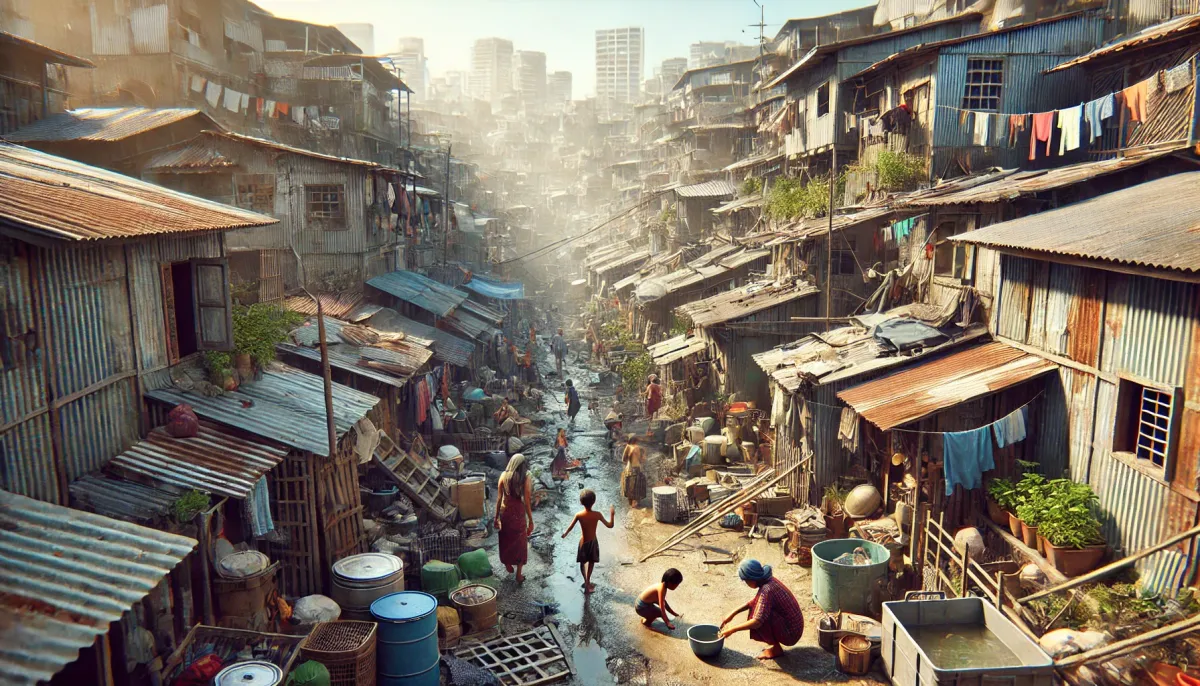Hey everyone, Mark here! As a seasoned backpacker with a penchant for exploring Asia's vibrant cities, I've seen a lot. But my recent trip to Myanmar left an indelible mark. I spent a week exploring the country, and the poverty was shockingly pervasive. My trip took me to places I'd never imagined, including a journey to Dala, home to Yangon's largest slum. This isn't your typical tourist blog; it's a raw, honest look at a side of Myanmar rarely seen.
A Glimpse into Poverty: Yangon and Dala
Yangon, Myanmar's largest city and economic center, suffers from extremely low incomes. Even by Asian standards, the poverty is staggering. Beggars and scavengers are a common sight. The average monthly salary is less than $100 USD, with 1000 RMB considered a high income. Across the Yangon River lies Dala, home to an estimated 200,000 people living in even greater poverty. Unable to find footing in Yangon, they've built makeshift homes from scrap metal and wood. The lack of running water means they rely primarily on rainwater. Many residents have no income, relying on friends and family for survival. Sadly, even the local gangs operate within the slum’s confines.
Meeting a Kind Soul in the Slum
During my time in the slum, I met a kind, older gentleman who graciously accompanied me, sharing stories of his life and showing me around his home and the community. Despite his own struggles, he was unwavering in his commitment to donating to the local temple. This act of generosity, rooted in the profound Buddhist faith that permeates Myanmar, truly moved me.
Navigating the Journey to Dala
Getting to Dala wasn't easy. Many local translators were hesitant due to safety concerns; the slum’s poverty leads to a higher crime rate, including robberies and theft. We eventually found a local guide who was as brave as he was kind. We took a ferry across the Yangon River, a bustling scene of activity with many people commuting from Dala to Yangon for work, returning at night to their village.
Life in Dala: A Closer Look
The contrast between Yangon and Dala was stark. While Yangon still shows signs of a major city, Dala is a different world. The main street boasted some shops, but our destination was a village a mile further, where we walked alongside our guide to observe.
The houses were a mixture of solid structures and flimsy, ramshackle dwellings made of corrugated iron and thin wood, some leaning precariously. Many were built on stilts to avoid flooding during the three-month rainy season. Water, used for washing and cooking, came from nearby ponds or wells. Clean drinking water was scarce; many residents purchased it in large, blue containers for roughly $2 USD. The poverty was palpable, yet the spirit of the people was surprisingly resilient.
| Housing Material | Water Source | Average Monthly Income (USD) | Crime Rate |
|---|---|---|---|
| Corrugated Iron, Wood, Scrap Metal | Rainwater, Wells | <100 | High (Robbery, Theft) |
A Visit to a Local Home
A warmhearted elderly man, aged 77, invited me into his home. His small house, roughly 2m x 6m, was a testament to his resourcefulness. He used layers of plastic sheeting for insulation, but it was still hot. He received a small monthly stipend from a previous employer and supplemented this with occasional training work and donations from former colleagues. Despite his own financial challenges, he consistently donated to the local temple, highlighting the deeply ingrained Buddhist values. The water he used, from a nearby pond, had a higher-than-normal pH level, a fact he shared openly.
Schools and Community Life
The community displayed a remarkable level of unity. I visited a local school, where students wore traditional clothing called longyi (for boys) and htamein (for girls). I even joined the children in a game of marbles. The children were friendly and welcoming, showcasing the community's warm hospitality. I had the chance to sample some local snacks, including betel nut, a mildly stimulating treat. The overall atmosphere was one of simple, communal living, even amidst immense hardship.
Safety Concerns and the Hidden Dangers
Our guide warned of a particularly unsafe area within the village, inhabited largely by recently released convicts. This section was characterized by a higher risk of crime and was advised to be passed through as quickly as possible, for safety. This highlighted the very real challenges faced by visitors to such impoverished areas.
Hope Amidst Hardship
Despite the poverty, the strong community spirit shone through. People helped each other, sharing food and resources. The deep-rooted Buddhist faith provided a sense of comfort and hope in the face of adversity. I visited a Buddhist temple which, despite the poverty surrounding it, was beautifully maintained. I also visited a Buddhist college, offering education to impoverished children, including orphans. This dedication to education and religious observance offered a glimmer of hope amidst difficult circumstances.







